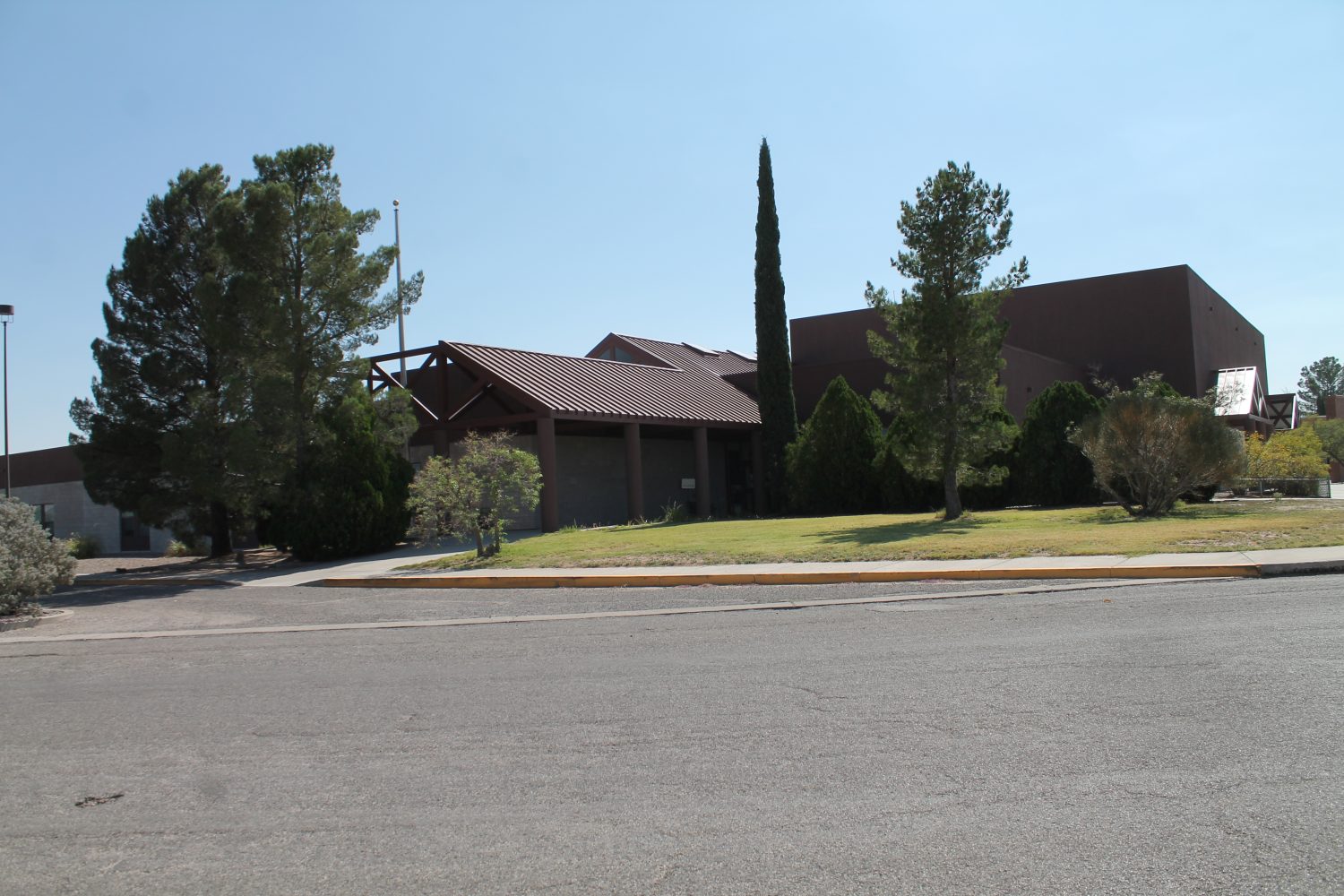Nichole Burgin, superintendent of Truth or Consequences Municipal Schools, stepped to the mic for her three minutes’ worth of public comment at the city commission’s June 12 meeting.
“We’d like to be able to flush our toilets,” Burgin said, referring to low pressure at Sierra and T or C elementary schools at 801 Smith St. The two schools serve about 500 students, pre-K through fifth grade. The students are currently on summer break, but will be back in August.
Burgin said the schools have “no water for three hours at a time,” and “for two days the cafeteria was without water,” and she was hoping something could be worked out before “contacting a lawyer.”
The schools’ maintenance employee said he’s been monitoring the water pressure at the schools. It had been between 60 and 50 pounds per square inch, but was down to 30 psi, when it was working at all. He said the pressure dropped some time during the roundabout construction.
Water and Wastewater Director Arnie Castaneda was on the agenda for a “water update.” Mayor Rolf Hechler asked him to first address the problems at the elementary schools, if it wouldn’t “put you on the spot.”
Castaneda said he “received a call from the elementary schools three weeks ago.” He thought the problem might be due to “the Arrowhead problem,” referring to a massive leak occurring “about a month ago” on Arrowhead Street that took weeks to fix, pressure changes causing more leaks to spiral out into neighboring streets.
The city is divided into “two pressure zones,” Castaneda said, “upper and lower.” The Arrowhead problem resulted in “20 or 30 valves” being opened, closed or adjusted, instead of the usual “four valves to isolate a line.”
“We may have opened a valve and we are losing pressure from upper to lower,” Castaneda said.
“Two weeks ago we began trying to find that valve,” Castaneda said. “We haven’t found it yet. It’s a slow process. We have to wait a day to see the result of the pressure. We are trying to get a list of the closed valves.” Castaneda did not say who or what company would have such a list.
Sidebar: The city sometimes contracts with Smithco Engineering of Caballo if coffering is required and if pipes are four feet or more down. The city has no water or sewer staff with the required certification to take on such repairs.
Castaneda pointed out that “20 psi is the state requirement,” addressing Burgin’s legal challenge.
Concerning roundabout construction possibly being the source of the schools’ loss of pressure, Castaneda said, “A mainline runs through the roundabout and elementary schools.”
He’s asked for maps showing pressure-regulation-valve locations from the New Mexico Department of Transportation twice, with no result, Castaneda said, and he can’t check them in the meantime.
City Commissioner Merry Jo Fahl said she lives near the elementary schools. She too has such low water pressure her “micro sprinklers,” which take minimal water pressure, are not operating.
“The schools have always had high water pressure,” in years past, Fahl said, and “they need 50 psi to operate.” Fahl expressed concern that a fire couldn’t be put out, if one should occur. She also said the school yard has not been watered, “so they won’t have that in August.”
Sierra Vista Hospital also had pressure problems that forced them “to put in a new pressure tank,” Fahl said, to ensure continuous operations.
Mayor Pro Tem Amanda Forrister requested that Castaneda “make this a number one priority” and provide the city commission with ongoing “updates.”
Hechler asked Castaneda if NMDOT had given the city roundabout planning maps, if not final maps showing actual placement. Yes, Castaneda said, he had planning maps. “Surely that must help,” Hechler said, which received no response from Castaneda. Hechler said he had contacts at NMDOT and he would call.
Sidebar: The city paid about $1.5 million to move its water and wastewater pipes to accommodate the roundabout construction project, as reported by previous City Manager Bruce Swingle.
I called and emailed Castaneda and emailed City Manager Angela Gonzales with questions about the city’s operation of pressure regulation valves or PRVs.
My questions and Castaneda’s responses:


when I worked for the city, Traci Alvarez paid Wilson and Co. over 10k to make maps of the water system and all the valves on a software program called ARCGIS, which the city also paid for but doesn’t have anyone qualified to use.
Wilson and Co produced the maps, wquite late but they produced them. The city has no edit capability on the maps, we have to keep paying wilson for that. Anyways, they have a map of all the valves and lines. They just don’t know how to use it.
“The city paid about $1.5 million to move its water and wastewater pipes to accommodate the roundabout construction project, as reported by previous City Manager Bruce Swingle.”
Should I read this to mean that the “free money” for our pointless roundabouts wasn’t so “free” after all?
No, the roundabouts were not completely paid for by the state. The T or C city commission, in 2017, as approached by NMDOT and it offered to build the roundabouts but the city had to have some skin in the game. The city had to pay for and move its water and sewer lines that were underneath the roundabouts and it had to pay for landscaping.
The city agreed. The city was shocked at the cost of moving the pipes and at the landscaping cost. NMDOT let the city pay for the barest, minimum landscaping…grass seed in the middle of the roundabout. Looks like NMDOT decided to make the landscaping much much nicer than that bare bones minimum.